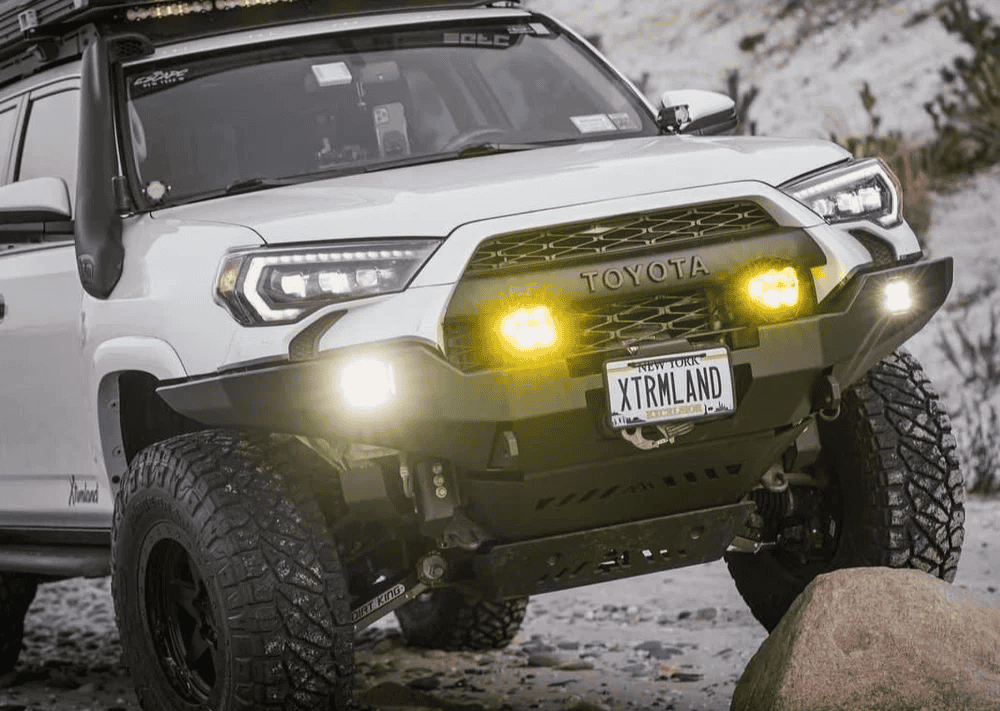Overland Vehicles

A surf focused overland setup lives at the edge of land and water, so the build must withstand sun, salt, wind, and soft sand. Start with ground clearance and a tire package that makes beach entries feel simple. All terrain tread with a wide footprint, aired down to the correct pressure, gives float on soft beaches while still tracking on washboard access roads. Add recovery points front and rear plus a quality shovel, traction boards, and a compact compressor to restore pressure when you exit the sand.
Storage is the next make or break factor. Boards ride safest in a locked, padded system that prevents rail rash and limits flex during rough tracks. Shortboards often fit inside a canopy mount or drawer length case, while longboards and quivers ride on a roof system with aero crossbars and wide pads. Keep wax, fins, tape, and leashes in labeled bins so you can rig up at the trailhead in minutes rather than rummage around.
Power and water systems support long routes between towns. A dedicated battery bank with a smart charger, fused distribution, and solar input keeps fridges, lights, and device charging steady. For water, a food grade tank and quick connect hose make rinses painless and reduce salt exposure for wetsuits and gear. Insulate the canopy or camper shell to reduce heat soak during mid day pauses and protect perishables.
Beaches change with season and swell. Read tide charts and local regulations before you put treads on the strand. Some beaches allow access only at low tide. Others require four wheel drive and specific safety gear. When in doubt, park high and walk in rather than risk a rising tide boxing in your exit.
Heavy items like water and recovery gear should ride low and forward to keep handling predictable. Use soft ties for boards and secure every loose item so bumps do not launch a fin key into a window. A lockable drawer keeps passports and cameras safe while you are in the water.
A compact galley makes quick meals and pre dawn coffee easier when wind is howling. Choose a stove that performs in gusts and pack a wind screen. A two zone fridge or a small fridge with a dry goods bin keeps food sorted. Warm showers extend the trip; a heat exchanger or compact electric heater paired with your water tank can deliver quick rinse sessions without huge power draw.
The best surf truck builds still rely on smart route choices. Swell windows change by coast, so track seasons and prevailing winds. On rocky points, vehicle access might be simple while the hike to the break is not, so sturdy board carry straps matter. In sandbar zones, beach driving access and seasonal closures can shift; always verify with a current map or ranger post.
Weather drives comfort and safety. Salt fog eats cheap hardware fast, so stainless fasteners and sealed electrical connectors are worth every dollar. Sun exposure beats down on roof mounted gear; choose UV resistant straps and covers. Wind is the real camp killer on open beaches, so a compact wind break or low profile awning that handles gusts can save a session.
Navigation tools also change by shoreline. Satellite maps reveal sand cuts and rocky shelves at low tide. Offline maps help you find legal beach access when cell service fades. Build a list of fuel, water, and grocery stops that align with swell timing so you do not leave waves to chase supplies.
Salt is relentless. Favor aluminum and stainless components, sealed bearings, and paint or coatings that resist corrosion. After every beach drive, rinse undercarriage, brakes, and suspension to extend service life. Electrical systems need marine grade tinned copper wire, sealed fuse blocks, and heat shrink terminals. Lights should be IP rated, with lenses that withstand salt spray and sand.
Comfort matters when you chase dawn patrol after a night on a backroad. A simple sleeping platform with a firm mattress, blackout window covers, and efficient ventilation turns short nights into real rest. Add red task lighting to protect night vision during early rigging. Keep a wetsuit drying plan off your sleeping area to prevent damp, salty bedding.
For safety and recovery, pack a tire deflator, compressor, shovel, traction boards, tow strap, and soft shackles. Practice a quick recovery routine on a quiet stretch of sand before you need it in a rising tide. Keep weight reasonable; a lighter truck floats better on sand and handles better on winding coastal roads.
When you are ready to translate this plan into a real build, the right partner helps you choose materials and layout that match your surf routes and crew size. Explore proven platforms and coastal minded systems on our page for overland rigs. If you want targeted upgrades rather than a ground up build, see our custom overland upfit options. Curious about process, materials, and delivery experience? Learn more at why choose OZK Customs.
You bring the swell map and the tide chart. We will help transform your travel plan into a clean, quiet camp that rolls through sand, handles salt, and keeps boards safe. Our team in Fayetteville builds coast ready trucks with smart storage, corrosion minded components, and power systems that just work. Share your route, your quiver, and your crew, and we will build around the way you surf.
Ready to turn your surf travel plan into a proven coastal rig? OZK Customs designs and builds complete and partial overland upfits with corrosion minded materials, smart storage, and dependable power. Tell us how you chase swell and we will engineer the truck that fits your boards, your crew, and your routes. Start your build conversation today.
ADDRESS:
6159 E Huntsville Rd, Fayetteville, AR 72701
PHONE:
(479) 326-9200
EMAIL:
info@ozkvans.com